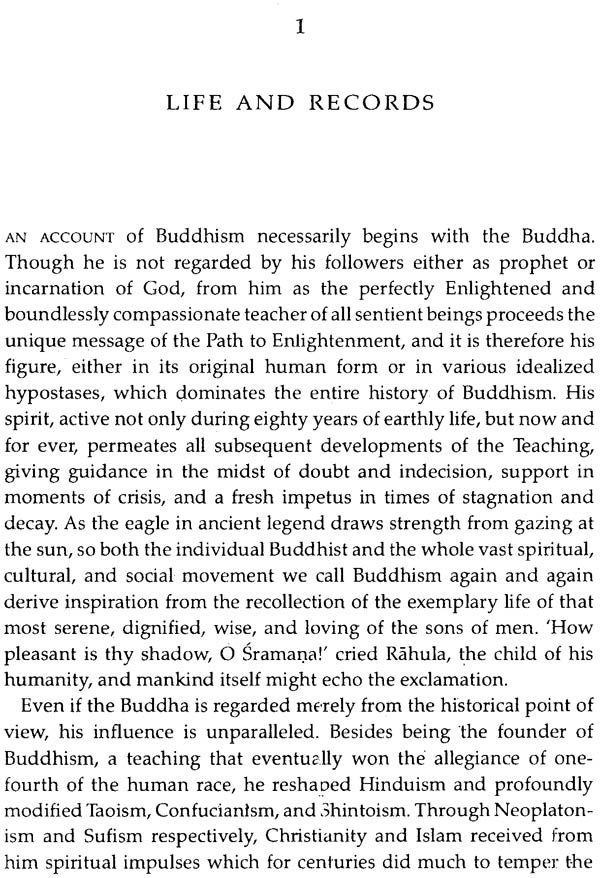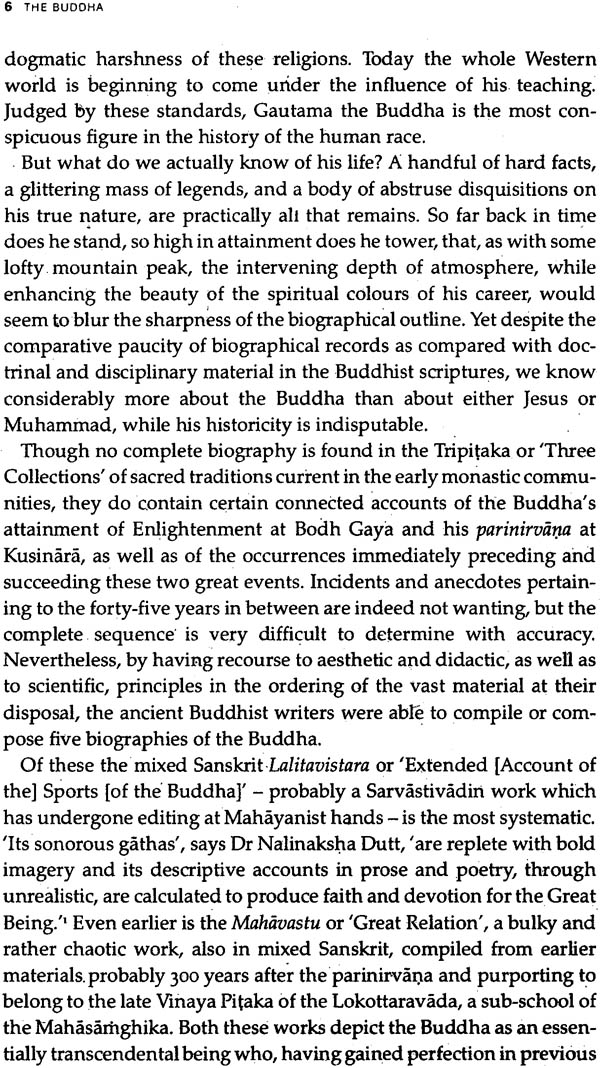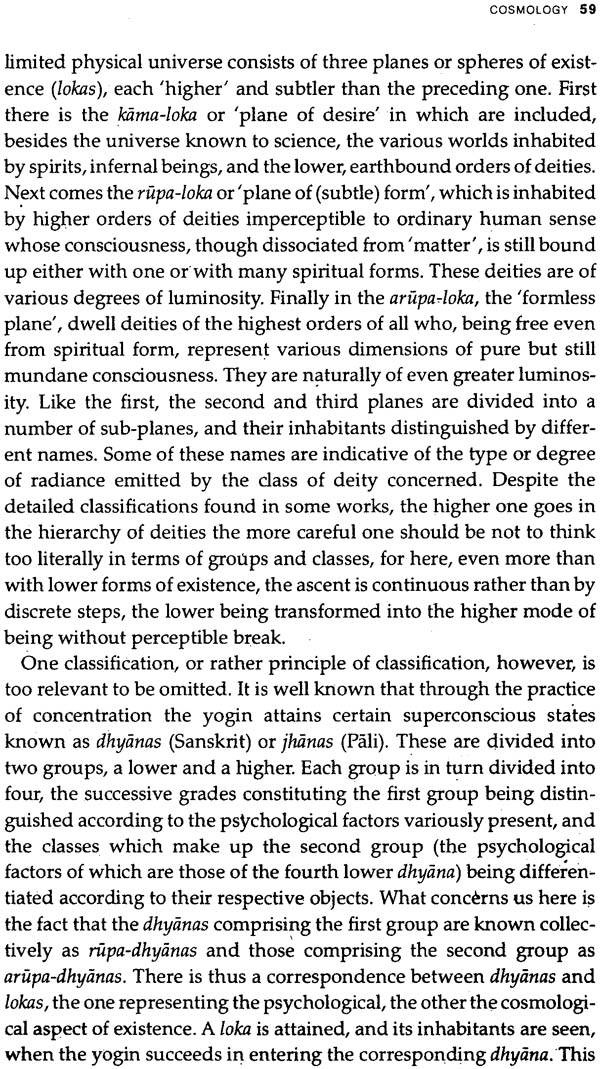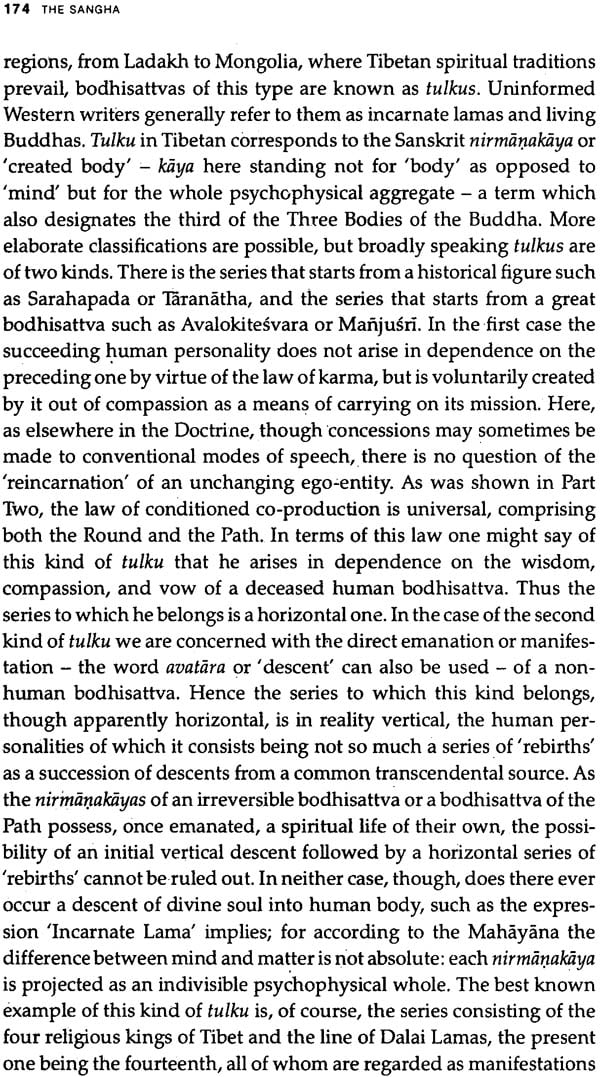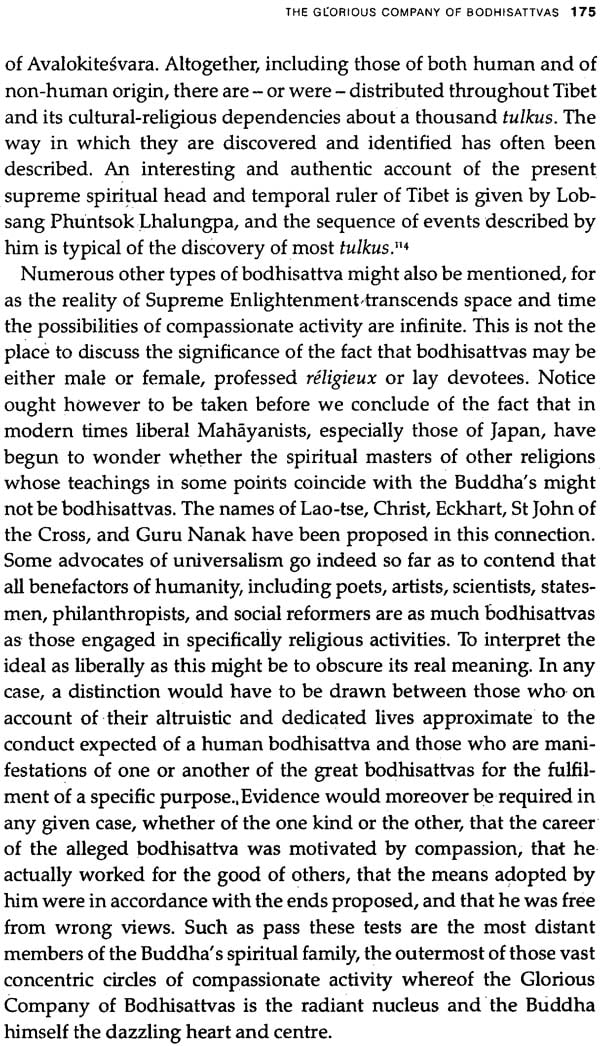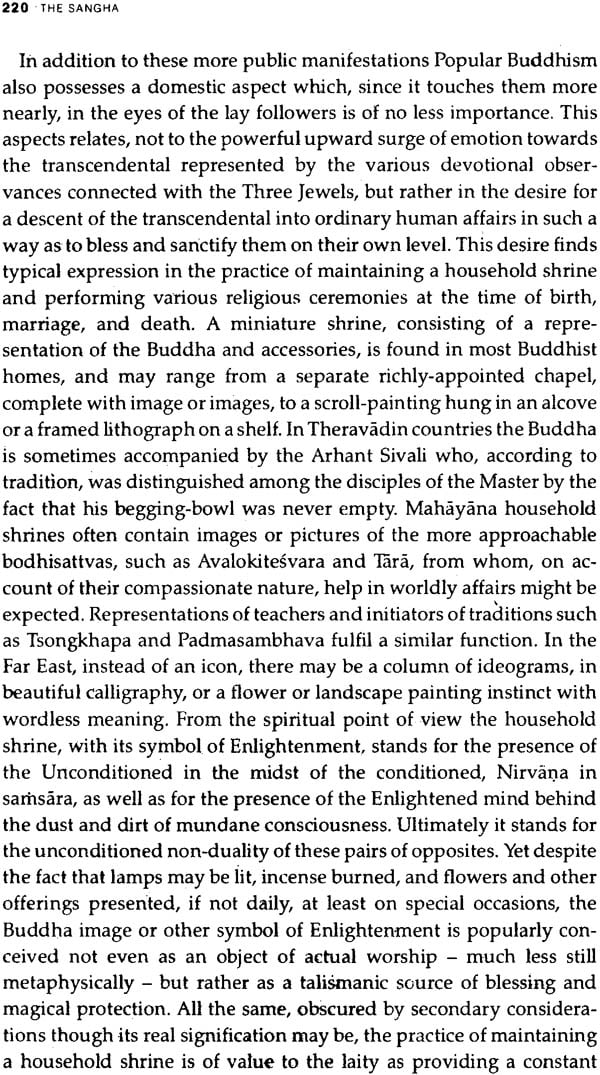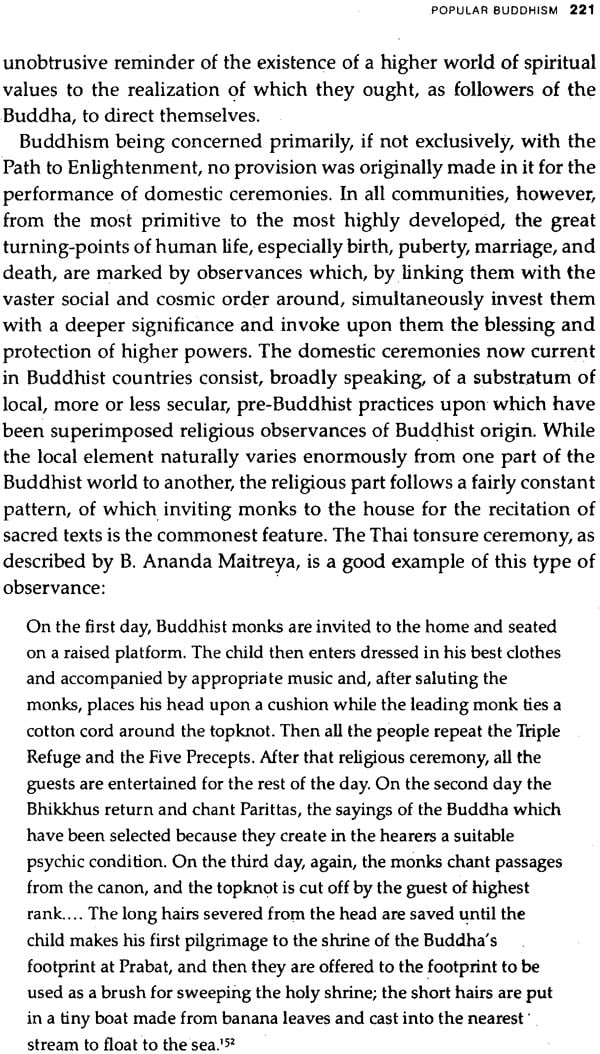
The Three Jewels
Book Specification
| Item Code: | NAU593 |
| Author: | Sangharakshita |
| Publisher: | Motilal Banarsidass Publishers Pvt. Ltd |
| Language: | English |
| Edition: | 1998 |
| ISBN: | 8120829476 |
| Pages: | 250 |
| Cover: | HARDCOVER |
| Other Details | 9.00 X 6.00 inch |
| Weight | 490 gm |
Book Description
The Three Jewels are living symbols, objects of commitment and devotion in the life of every Buddhist.
The Buddha Jewel: symbol of Enlightenment, particularly as embodied in Siddhartha Gautama, the man who discovered the path to human perfection.
The Dharma Jewel: symbol of the path itself, the teachings and practices that help each individual towards Enlightenment.
The Sangha Jewel: symbol of the fellowship enjoyed by those whose lives are based on the quest for Enlightenment.
This authoritative book, by an outstanding Western Buddhist teacher, explains the pivotal importance of these Three Jewels. To understand the Three Jewels is to understand the central ideal and principles of Buddhism. To have some insight into them is to touch its very heart.
SANGHARAKSHITA was born Dennis Lingwood in South London, in 1925. Largely self-educated, he developed an interest in the cultures and philosophies of the East early on, and realized that he was a Buddhist at the age of sixteen. The Second World War took him, as a conscript, to India, where he stayed on to become the Buddhist monk Sangharakshita.
After twenty years in India, he returned to England to establish the Friends of the Western Buddhist Order (FWBO) in 1967, and the Western Buddhist Order in 1968. A translator between East and West, between the traditional world and the modern, between principles and practices, Sangharakshita's depth of experience and clear thinking have been appreciated throughout the world.
DURING THE LAST five decades interest in Buddhism has become wide-spread in the West. From being the closed preserve of professional orientalists, whose interest was largely linguistic and historical, and to whom Buddhism was little more than a particularly well-preserved mummy in the museum of Comparative Religion, the wise, compassionate, and vital teachings of the Buddha have started attracting the attention of an increasing number of sensitive and thoughtful people who, though having outgrown authoritarian creeds of every kind, are yet in search of a framework of psychological and spiritual reference ample enough to contain and elastic enough not to confine their aspirations. Whether choosing to describe themselves as Buddhists or not, those who feel 'at home' within the framework called Buddhism, and who settle down therein, in effect commit themselves to the realization of an ideal by following a certain way of life in the company of other people similarly committed. This is what is traditionally known as 'Going for Refuge' to the Three Jewels, an act which, though it may find ceremonial expression, is essentially a profound inner experience, a spiritual rebirth or 'conversion', as a result of which one's whole life is transformed and reoriented.
The Three Jewels are the Buddha, the Dharma, and the Sangha. By the Buddha or Enlightened One is meant not only the historical Sakyamuni, the founder of Buddhism, but the ideal of Enlightenment both in its universal aspect and its ultimate reality. The Dharma or Doctrine is not only the sum total of the Buddha's teachings but the whole body of moral and spiritual laws, discovered and revealed by him, of which the doctrinal teachings form the conceptual formulation and practical exemplification. Similarly the Sangha or Assembly is the spiritual community of those who, following the Dharma, have attained the same levels of spiritual experience, or observe a common rule of monastic discipline, or simply the whole body of the faithful going for refuge to the Three Jewels - enlightened and unenlightened, monastic and lay, real and nominal.
The Three Jewels are, therefore, of pivotal importance in Buddhism. Indeed, the Three Jewels are Buddhism.
Such being the case, it is astonishing that, although there have appeared in print numerous accounts of the life and teachings of the Buddha, both popular and scholarly, not a single work of importance has been dedicated to the Three Jewels as such, even though these constitute the triple object of the central act of the Buddhist life, from which all other acts derive their significance, and without reference to which Buddhism itself is unintelligible.
The present work is designed to remedy this deficiency. Originally written as a series of articles for the Oriya Encyclopxdia, it subsequently reached a much wider audience when published in book form. May this new Windhorse edition be the means of opening the eyes of many more people to the multi-faceted splendour of the Three Jewels.
**Contents and Sample Pages**
